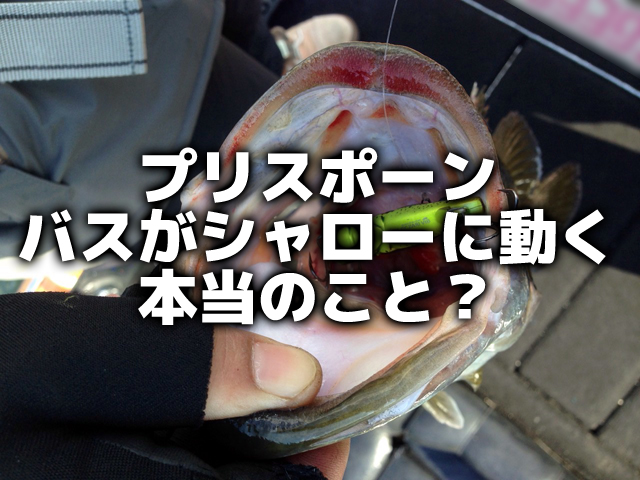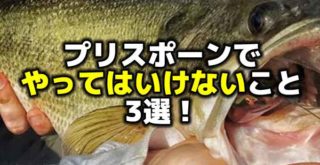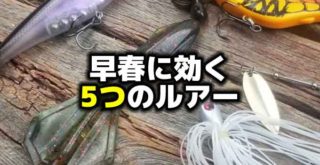プリスポーンバスがシャローへ動く本当のこと?

こんにちは!店長の小山です!
本日は海外サイトより、”What Really Makes Prespawn Bass Move Shallow?”という記事を引用してご紹介いたします。
引用先:scout.com”What Really Makes Prespawn Bass Move Shallow?”By WALKER SMITH 02/28/2017(海外サイトです)
「スポーニングを控えた春のバスは、冬の間に棲家にしていたディープを離れ、シャローへ向かいます。」
というのがバス雑誌などに書かれていることですよね。
では、何をもってバスは、春を感じているのでしょう?
水温?気温?日照時間?月齢(潮まわり)?体内時計?ベイトの動き?そもそも正解はあるの?なんて思いますよね。
この記事には、wired 2 fishのプロスタッフ、ウォーカースミス氏の見解と数名のプロアングラーへのインタビューが書かれています。
彼らがこの時期のバスの動きについてどう考えているのか、非常に興味深いところです。
それでは読んでみましょう。
WALKER SMITH
There is a lot of debate surrounding this topic, so we explore several different theories from some of the world’s best anglers.
Prespawn bass become much easier to catch when they make their move towards shallow water. The females are also full of eggs, so they weigh much more than they normally would. It’s the best time of the entire year to catch a giant. That’s exactly why we’re taking the time to discuss this topic.
But what really makes them move shallow? We’re going to explore several theories in this piece.
Personally speaking, I’m convinced that length of day plays the biggest role in their annual shallow-water push. Much of my reasoning comes from my deer hunting background: Our rut occurs during the second week of November each year—give or take a few days—regardless of the weather. It happens every year, weather or moon phase be darned. It doesn’t matter if it’s 20 degrees or 80 degrees; the majority of our bucks start chasing does. Their biological instincts know that it’s time to do business.
We overthink it and try to turn it into an exact science.
I think bass are the same way. In my area, March is when the first major prespawn push occurs. Whether it’s 75 degrees or 45 degrees, the big females show up at the same time every year. It doesn’t seem to matter how cold or mild the winter was. Like any other wild animal, there’s something inside of a bass that tells them it’s time. That’s not to say that moon phase isn’t important as well, but I think length of day plays the biggest role in their initial prespawn move.
Some people agree with me and some think I’m wrong. So I reached out to some of the best anglers in the world to see what their theories are.
この話題については多くの議論が取り巻いていますので、何人かの世界最高のアングラーからいくつかの異なる理論を探求することにしましょう。
プリスポーンバスがシャローの方へ移動するときには、簡単にキャッチすることができます。またメスはたくさんの卵を抱えていますので、通常よりもはるかに重くなっています。ジャイアントバスを捉えるのには一年で一番良い時期でしょう。それがまさに私たちがこのトピックについて議論する時間を取っている理由です。
しかし、実際にバスがシャローへ動く要因は何なのでしょう?この記事ではいくつかの理論を探求します。
個人的に言えば、私は日照時間の長さが毎年シャローへ向かわせる最大の役割を果たしていると確信しています。この推論は、私の背景にある鹿の狩猟から来ています。鹿の発情期は、天気に関係なく毎年11月の第2週(プラスマイナス2~3日の間)に起こります。それは毎年、天気や月齢に関係なく起こります。それが-6℃だとか26℃だとかどうかは関係なく、その大部分はその通り始まります。生物学的本能で、それが自分のするべきことを行う時であることを知っているのです。
我々はそれを科学的に解明しようと考えています。
バスも同じだと思います。私の地域では、3月はプリスポーンの第一陣が発生するときです。 24℃であろうと7℃であろうと、毎年ビッグママが同時に現れます。冬がどんなに寒かったか穏やかであったかは重要ではないようです。他の野生動物と同じように、バスの中には時間の経過を伝える何かがあります。月の満ち欠けまでも重要ではないと言うわけではありませんが、最初のプリスポーンの動きは、日照時間の長さが最大の役割を果たしていると思います。
これには何人かは賛成し、何人かは否定されると思います。そこで私は、世界の最高のアングラーたちに、彼らの理論が何であるかを知るために接触しました。
John Crews(ジョン・クルーズ)
Why I called him: He’s one of the best shallow crankbait anglers on tour and prespawn is prime time for guys like John.
“I think it’s purely instinctual. They know the spawn is coming and they’re getting up there and putting the feed bag on. I’m also a big believer that it has a lot to do with crawfish. They come out of hibernation when water hits the 52 to 54-degree mark, so when the water gets to 50 degrees, the bass are up there waiting on them. That’s a big reason why crawfish-colored crankbaits are such major producers.
“Water temperature also plays a big role. I’ve seen certain years when it’s colder than normal and the fish are simply not shallow as early as they would normally be.”
When I asked him why crankbaits are such big-time producers in the early prespawn, his answer revolved largely around the element of unfamiliarity.
“These big females suspend in the middle of coves and in deeper water throughout the winter. They’ll go several months without seeing a single crankbait, so essentially, they’re totally unconditioned. When they move shallow and see a shallow plug, they absolutely wreck it.”
なぜ彼に尋ねたのか:彼はツアーで最も優秀なシャロークランクベイトアングラーの一人で、プリスポーンはジョンのような男にとって最高の時間だからです。
「純粋に本能的だと思う。彼らは産卵期が来ていることを分かっていて、シャローへ上って、食事もそこでとる。私はまた、それがザリガニと関係があると確信しています。水温が11℃から12℃になったときに冬眠から出てくるので、水温が10℃になると、バスはそこで待つようになります。それは、ザリガニカラーのクランクベイトがその時期の主要なヒットルアーである大きな理由です。
「水温も大きな役割を果たしています。通常より冷たく、魚が通常どおりの時期にシャローにいないという特定の年がありました。
私が、なぜクランクベイトがプリスポーンの早い時期に爆発的なルアーであるのかを彼に尋ねたところ、彼の答えは、見慣れていないからだろうと考えているということだった。
「これらの大きなメスは、ワンドの真ん中など冬の間はディープで停まります。クランクベイトなど見ることなく数ヶ月過ごすでしょうから、本質的に完全なる無条件反射です。シャローへ動いてシャロープラグを見れば、もう絶対にそれに当たります」
Mark Menendez(マーク・メネンデス)

Photo by Walker Smith/Wired2Fish
Why I called him: Mark has a degree in fisheries biology and he backs up his knowledge with an impressive on-the-water resume. I consult him frequently whenever I have biology-related questions.
“Photoperiod has a huge pull on these fish; I think that’s the number one thing that gets the big waves of prespawners into the shallows. I’ve seen thousands of fish pull up and spawn with the right photoperiod and a full moon, but with a terrible water temperature.
“We were at Lake Murray in February one year and the moon was right—we had a full moon coming—and the days were getting longer. But the water temperature was still 51 degrees. In one bay on the lower end, the giant bass showed up. I kid you not: In a 200 yard stretch I saw over 80 fish that were all 7 pounds or bigger. They were set up up for spawning, rubbing their bellies and everything.
“I also saw a similar thing on Clear Lake in California. The water temperature was 49 degrees—much colder than the 58 to 62-degree range it usually needs to be for spawning—and there were over 150 spawning fish in a creek. I am a firm believer that the biggest fish in a lake will always try to spawn first.
“Stained water helps hold warmer temperatures and clear water takes longer to warm. In clear water fisheries such as Lanier or Clarks Hill, you have fish that move shallow, but shallow is relative; they still might be 15 feet deep. The dirtier the water, the shallower it pushes them so they can have ample light penetration for their eggs to hatch.
“Here’s something else that will make you think: Why do daffodils only show up after the first week of February, regardless of weather? It’s all length of day. The internal clock of most organisms is based on photoperiod, and bass are no different.”
なぜ彼に尋ねたのか:マークは漁業生物学の学位を取得しており、水中での印象的な要約により知識をバックアップしています。私は生物学に関連する質問があるときはいつでも彼に頻繁に相談します。
「光周期(一日の明暗サイクル≒日照時間の変化)はこれらの魚を大きく引き寄せています。私はこれが、プリスポーナーがシャローへ向かうビッグウェーブをもたらす最高の要因だと思います。私は極端な水温の時以外、何千もの魚が引き上げられ、適切な光周期と満月で産卵するのを見ました。
「私たちはある年、2月にマレー湖にいたとき、月がまさに満月で、日も長くなっていた。しかし水温はまだ10℃でした。一番下のワンドに巨大なバスが現れました。冗談ではなく、180メートルくらいのストレッチですべて3キロ以上の80匹以上のバスを見ました。それらは産卵のためにやってきて、腹やその他の場所をこすっていました。」
「私はカリフォルニアのクリアレイクでも同様のことを見ました。水温は9.4℃で、通常は産卵のために必要な14〜16℃の範囲よりもずっと寒かったのですが、小川には150頭以上の産卵しているバスがいました。私は湖の中で最大の魚が常に最初に産卵しようとしていると確信しています。」
「ステインウォーターは暖かい温度を保ち、クリアウォーターは暖まるのに長くかかります。 ラニアーレイクやクラークスヒルレイクのようなクリアウォーターレイク(ともにアメリカ南部の遠浅のクリアレイク)では、シャローへ動く魚もいますが、シャローとは相対的なものです。彼らはまだ4.5メートルの深さにいるかもしれません。水がマッディ―なほど浅く、卵が孵化するために十分な光の浸透を確保できるように、シャローへ移動します。」
「考えるべきもう一つの問題:なぜ水仙の花は天気に関係なく、2月の第1週以降にしか咲かないのですか?それは一日の長さです。ほとんどの生物の内部時計は光周期に基づいており、バスも同じなのです。」
Justin Lucas(ジャスティン・ルーカス)

Photo by Walker Smith/Wired2Fish
Why I called him: Justin is a very in-tune fisherman. He pays very close attention to small environmental variables and is an extremely versatile angler.
“I think it’s length of day, but more from a water temperature standpoint. Naturally, longer days give the sun more time to warm the shallow water on a fishery. If I’m going to a new lake, I’m going to judge what the fish are doing based on water temperature, each and every time.
“My rule of thumb is pretty straightforward: If the water temperature is above the 46-degree mark, you’re going to start seeing movement towards shallow, hard cover. I like to get on riprap and wind a Berkley Square Bull crankbait. Combine that with a little stain in the water and it can be some of the best fishing you’ll experience all year.”
なぜ彼に尋ねたのか:ジャスティンは非常に調和のとれた漁師です。彼は小さな環境の変化に非常に細心の注意を払い、非常に多彩なアングラーです。
「私は日の長さだと思うが、もっと言えば水温なんだと思います。当然のことながら、日が長くなれば太陽がフィールドのシャローウォーターを温める時間を与えます。知らない湖に行くなら、私は水温に基づいて、魚がいま何をしているのかを常に判断するつもりです。」
「私の経験則はかなり簡単です。水温が7.7℃を超えると、シャローのハードカバーに向かって動き始めます。私はリップラップでバークレイ・スクエアビルクランクベイトを巻くのが好きです。それを少し濁りの入った水域と組み合わせれば、一年を通して経験できる最高の釣りになるかもしれません。」
Dean Rojas(ディーン・ロハス)

Photo by Walker Smith/Wired2Fish
Why I called him: Dean’s knowledge of shallow bass fishing runs deep. He broke the record for the heaviest five-bass limit in B.A.S.S. history—45 pounds, 2 ounces—targeting spawning bass on Lake Tohopekaliga.
“Water temperature is a big thing. But perhaps even more important is a consistent weather pattern for three or four days; that will cause them to get shallow in a hurry. The ones staging on the secondary and primary points will slide back quickly. I disagree with the whole moon theory—if you have cold front they will not move up.
“A good example is when I was fortunate enough to weigh 45 pounds, 2 ounces when I broke the record. It had been cold for so long, but we had four or five warm days and they just flooded the bank overnight. There was no full moon in sight. I’ve also seen this happen on Santee Cooper as well.”
なぜ彼に尋ねたのか:ディーンのシャローでのバスフィッシングの知識には、深いものがあります。彼はB.A.S.Sの歴史の中で最も重い5本リミットの記録を破った。[45ポンド、2オンス] トホピーカリーガレイクのスポーニングバスをターゲットにしたものです。
「水温は大きいと思います。しかし、おそらくさらに重要なのは、3日または4日間の安定した天候パターンです。彼らは急いでシャローへ向かうでしょう。主要な岬や中規模な岬にステージングするものは、すぐに後退します。私は月齢(大潮)理論には同意しません。もし寒冷前線が来れば、彼らはシャローへ移動しませんので。」
「良い例として、私が45ポンド、2オンスの重さで記録を破ったときには十分に幸運だったときなのです。それまでずっと寒かったのですが、そこから4〜5日の暖かい日が過ぎました。それで彼らは一晩中バンクに溢れたのです。満月ではありませんでした。これと同様のことがサンティークーパーでも起こっているのを見ました。」
Brandon Palaniuk(ブランドン・パラニューク)

Photo by Brandon Palaniuk/BMP Fishing
Why I called him: I’ve seen Brandon catch shallow prespawn fish—in the 3 to 6-foot range—in 43-degree water. He has an excellent grasp on when to target early prespawners and it seems like he often figures out this bite earlier than many anglers.
“I would think length of day is the biggest factor. I say that because I’ve seen it happen without the presence of bait. It’s something in their sensory system that makes them hard-wired to move shallow. A full moon certainly helps the cause as well. Regardless of the time of year, I believe fish push shallow during a full moon period.
“Questions like this are what make this sport so challenging. We can’t ask a bass why they do what they do. You can have the best mechanics and decades of experience, but you’ll never fully understand a bass.
“It also seems like highland-type reservoirs such as Cherokee, Hartwell and Grand allow for prespawners to push shallow much earlier than flatter and shallower fisheries. These type of lakes have several very important factors that make for an earlier shallow prespawn bite: Hard cover, red clay, rock and perhaps most importantly, verticality.
“In extreme temperatures, whether it’s hot or cold, fish will move very shallow but they need to have deep water nearby.”
なぜ彼に尋ねたのか:水温6℃、水深0.9~1.8メートルの範囲で、ブランドンがシャローのプリスポーンフィッシュをキャッチするのを見ました。彼は初期のプリスポーナーをいつターゲットにするかについて優れた把握力を持っており、多くのアングラーより早くバイトを得ているように思われるためです。
「私は日の長さが最大の要因だと思う。何故そう言うか、それがベイトの存在なしで起こるのを見たためです。彼らの感覚システムのようなものに、シャローへ動くようにプログラムされているのです。満月は確かにその原因にもなっています。時期にかかわらず、私は魚が満月の間にシャローへ上がると信じています。」
「このような質問は、このスポーツをとても挑戦的にするものです。バスになぜそうするのかを聞くことはできません。最高の道具と何十年もの経験を持ってしても、バスを完全に理解することは決してありません。
チェロキー、ハートウェル、グランドのようなハイランドタイプのリザーバーでは、プリスポーナーがよりフラットで浅いフィールドよりずっと早くシャローへ上がることができるようです。これらのタイプの湖には、ハードカバー、赤土、岩石、そしておそらく最も重要なのは、垂直(岩盤・護岸)という、より早いシャローのプリスポーンバイトを得るためのいくつかの非常に重要な要素があります。」
「極端な気温でも、暑いか寒いかにかかわらず、魚はシャローへ動きますが、近くにディープがあることが必要です。」
いかがでしたか。
読めば読むほど、見事に全員バラバラな意見に本当に混乱しますよね(笑)
でも彼らは皆、世界のトッププロばかりなんですよね。
そのプロたちが、それぞれ全く別の意見を持っている。これは、最後にパラニュークが言ったように、決してバスのことを完全に理解することはできない、ということなんでしょうね。
そしてそれは、私たち一般のアングラーでも、いろんな意見をもって楽しむことができるということです。
自分の意見がすべて正しいと考えて他人の考えを否定するより、いろんな人の意見を聞いて考えることがバス釣りの楽しいところなんだと思います。
それと同時に、自分が見たもの、経験したこともやっぱり大事にしてバス釣りが上達するようになりたいですね。
それでは、また。
毎度ありがとうございます!




























